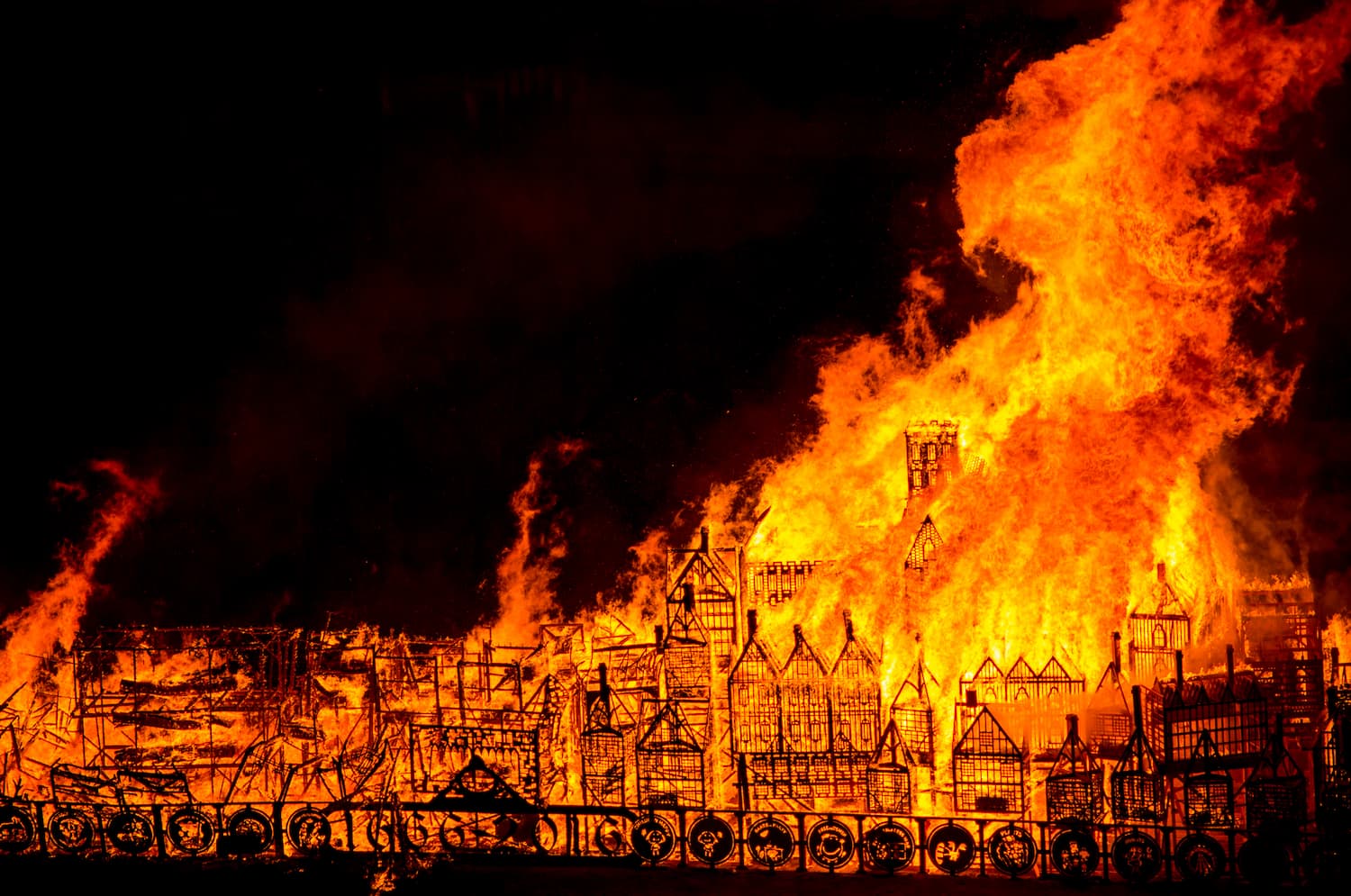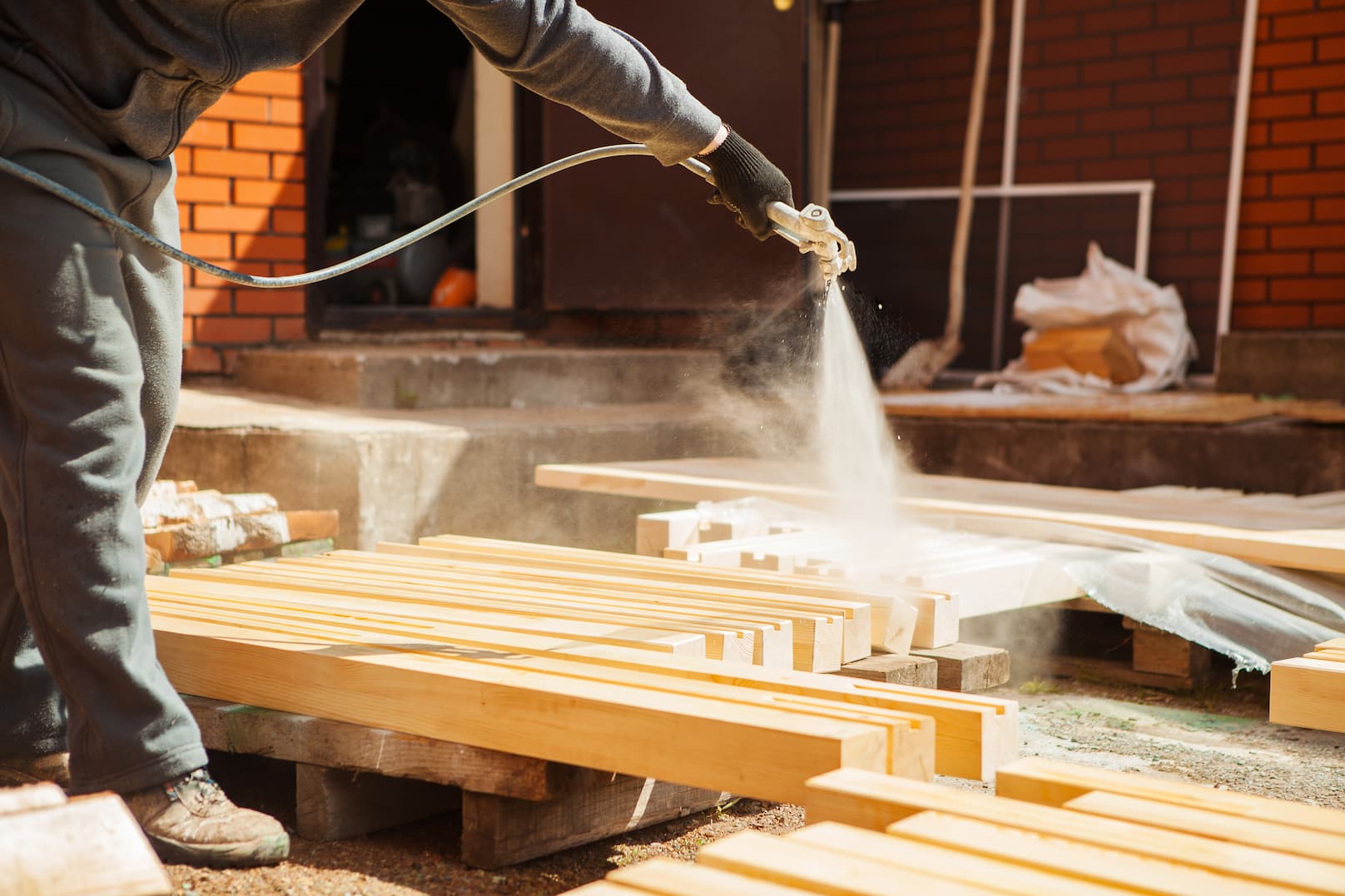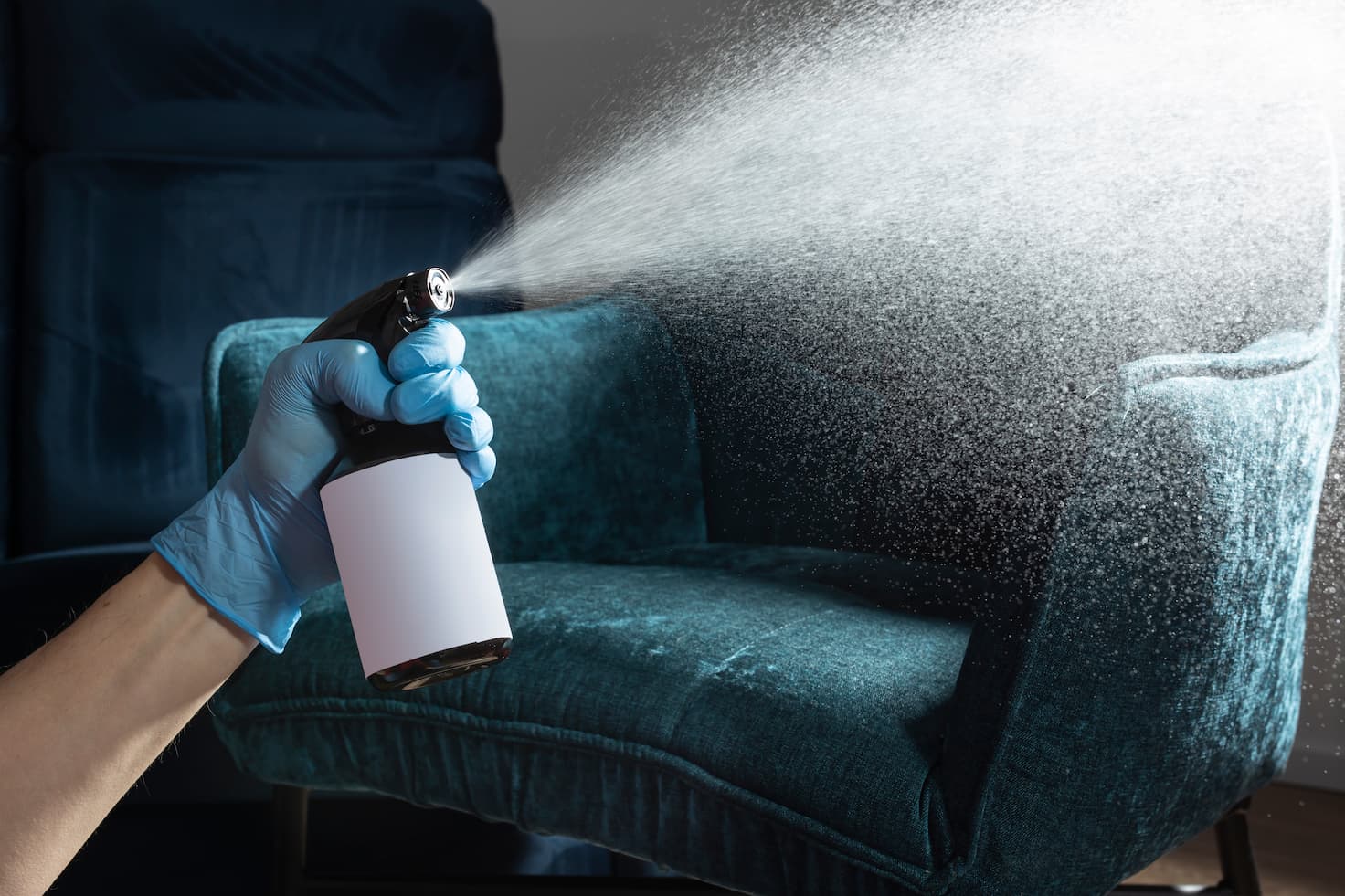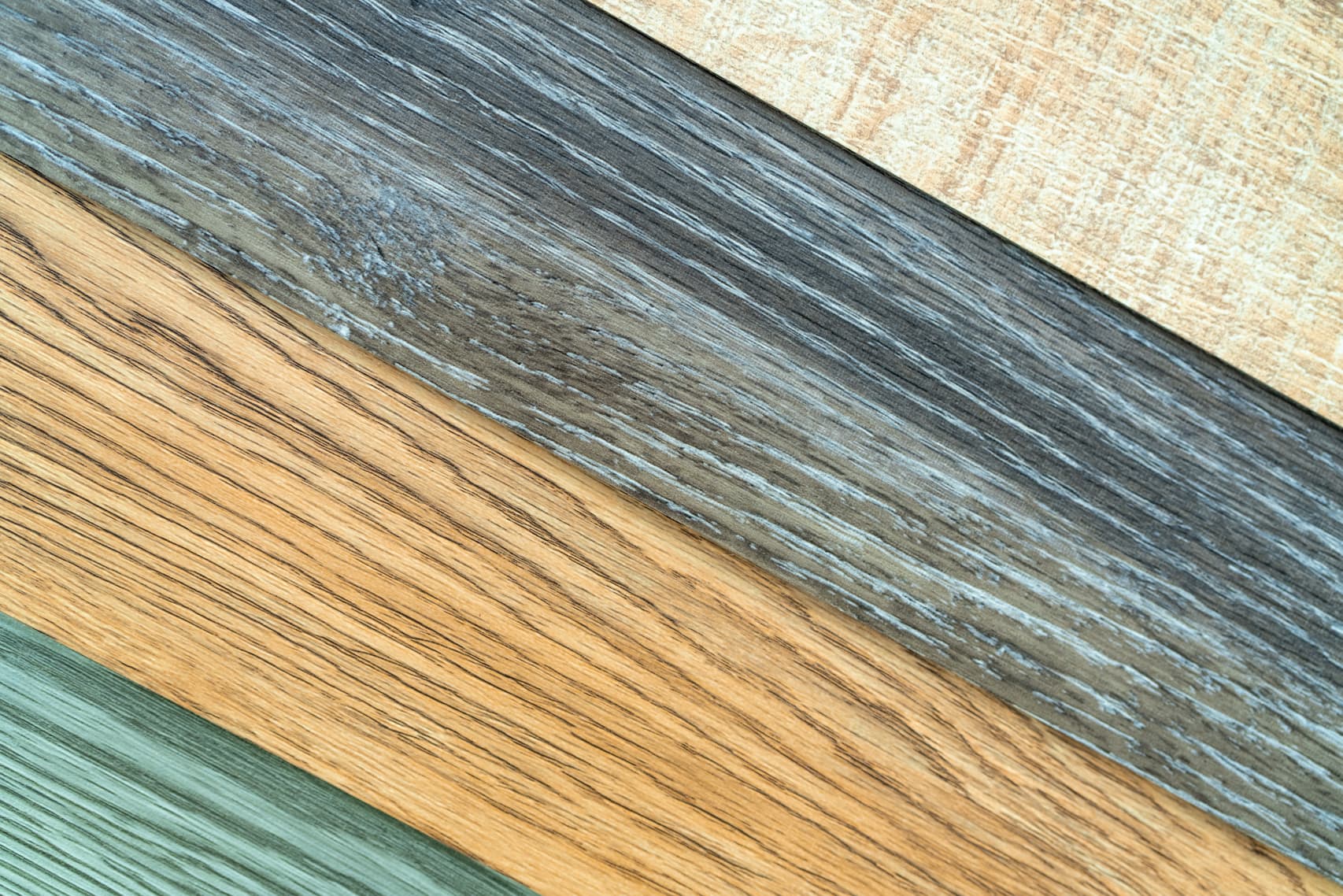Complete Guide to Fire Retardants: Facts and Applications
Fire has been a part of human existence from the dawn of time. On one side, fire symbolizes the beginning of civilization, light, and warmth. On the other side, fire is one of the most feared elements due to its destructive and spreading force, which is capable of causing severe damage, injury, and death. In today’s world of modern construction, denser urban development, and increasingly severe wildfire seasons, fire prevention has never been more critical.
The first time humans used a tool to minimize fire spread was during the Great Fire of London in 1666. Since then, fire protection and fire retardant technologies have been continuously improved. After thorough investigation and experiments, firefighting and fire prevention have scaled to a new level, making fire retardants one of the most effective ways to protect material goods and human lives.
For the past years, the United States fire code has been continually updated to ensure the fire safety of residential and commercial structures and products. The fire protection industry has been adapting to those fire codes through fire retardant products that can be applied to fabrics, furniture, fireproofing wood, and other materials.
In this article, we will explore the essential facts behind fire retardants, their chemical makeup, practical applications, and material-specific considerations to help readers make informed decisions when incorporating fire retardant products into domestic and commercial fire prevention strategies.

About the Chemical Composition of Fire Retardants
What Is Fire Retardant Made Of?
Fire retardants are fire protection products that contain chemicals that slow down fire development and reduce fire intensity. The chemical composition of fire retardants consists of additives, fire inhibitors, and fire suppressants which can be found as liquids, solids, foams, or gases.
For clarity, fire retardant refers to products that slow flame spread, fire resistant describes materials designed to withstand fire exposure for a limited time, and “fireproofing” is a general industry term for treatments that improve a material’s fire performance rather than making it completely fireproof.
The chemicals used for fire retardants vary depending on the intended application, but most of them combine halogenated chemicals and flame-inhibiting fillers like
- Aluminum hydroxide
- Calcium carbonate
- Magnesium oxide
From an environmental standpoint, fire retardant formulations are evaluated based on intended use, application method, and regulatory compliance, with manufacturers and distributors aligning products to applicable safety and environmental standards.
Types of Fire Retardants
Fire retardant classifications help designers, inspectors, and safety professionals select appropriate products based on material type, fire risk, and applicable building or safety codes. Fire safety experts have classified fire retardants into three categories; however, Class A, B, and C terminology may vary slightly by industry, testing method, or regulatory framework and should always be verified against local code requirements.
- Class A fire retardants, also known as fireproofing fire retardants. They are used for fireproofing materials, ceilings, walls, wood, and fire-resistant insulation, such as structural wood framing or interior wall assemblies where flame spread reduction is required.
- Class B fire retardants are used for fire-resistant fabrics and fireproofing electronics. These fire retardants are also used to protect other combustible materials, such as upholstered furnishings and drapery systems, in commercial spaces.
- Class C fire retardants are fire suppressants used to protect electrical systems and to fireproof flammable liquids, commonly applied in areas containing energized equipment or liquid-fuel hazards.
Certain formulations, such as specialized fire retardant paints, are designed to combine surface protection with tested fire-resistance performance for specific material types.

Is Fire Retardant Toxic?
Fire retardants vary widely in composition and performance, and their safety profiles depend on formulation, application method, and exposure conditions. Most fire retardants are considered safe and non-toxic. However, fire retardants can be toxic for humans and animals when inhaled, ingested, or exposed to the skin for extended periods.
Polybrominated diphenyl ethers (PBDEs) are compounds commonly found in fire retardants to protect materials from fire and make them more resistant. Based on available scientific studies, certain PBDEs have been associated with potential health concerns, prompting increased regulatory review and reformulation efforts across the fire protection industry.
Some of the health risks associated with fire retardants include
- Thyroid disruption
- Endocrine dysfunction
- Consequences for the immune system
- Reproductive toxicity
- Cancers
- Detrimental effects on the development of the fetus and child
- Neurologic function
These effects are primarily linked to specific chemical classes and prolonged or high-level exposure scenarios. Some flame retardants pose a serious threat because they bioaccumulate in human bodies, triggering a cascade of adverse effects as the chemicals reach increasingly high concentrations in the bloodstream and other organs. In this regard, firefighters face a greater danger of experiencing these negative outcomes.
Fire retardants are still useful if chosen with the necessary fire safety protocols. Regulatory oversight plays a critical role in evaluating these products; the U.S. Environmental Protection Agency (EPA) and other governmental organizations are responsible for reviewing fire retardant regulations and substance standards to ensure adequate safety compliance. RDR tries to ensure that none of the retardants we sell contain PBDEs. Within this framework, RDR takes a precautionary approach and works to ensure that the retardants we sell do not contain PBDEs, aligning product selection with current regulatory guidance and industry expectations.
What Is Fire Retardant Spray?
A fire retardant spray is a surface-applied fire protection treatment designed to reduce flame spread and fire intensity on treated materials. Among the fire retardant products available in the market, sprays are one of the most commonly used in fire protection systems. Fire retardant sprays combine chemical suppressants such as sodium borate and ammonium phosphate, dispersed in materials and fabrics as a spray, foam, liquid, or aerosol solution to inhibit fire hazards.
Upon contact with fire triggers and heat, a coat of fire retardant spray acts by reducing oxygen levels in the area or object where it was previously applied, reducing fire intensity, spread, and reignition risks. These sprays are commonly used on surfaces such as fabrics, wood, decorative elements, theatrical backdrops, and other combustible materials where direct fireproofing is not feasible.
Fire retardant spray formulations can vary by manufacturer, intended material, and testing standard, making it important to match the product to its specific application and fire safety requirements.

The most often used flame retardants contain bromine, while numerous other varieties can relate to several chemical compounds.
Fire suppression sprays come in a wide range of formulas, each with its recommended use and storage period in an emergency. Some sprays are designed for long-term use in the great outdoors, and others are intended to be used in the split second before a fire threatens your home.
Is Spray Foam Insulation Fire Retardant?
Spray Polyurethane Foam (SPF), often known as spray foam insulation, is created by combining isocyanate and polyol. When applied to a surface or cavity, SPF expands up to 120 times its original size.
This spray is mostly used to insulate the walls, ceilings, and roofs of construction projects and is usually available in two densities, open-cell or closed-cell. Unfortunately, all types of insulation are flammable, meaning spray foam insulation itself is designed for thermal performance, not inherent fire resistance, and fire retardants are not part of its base composition.
However, fire-resistant products can be applied to the spray foam insulation to reduce fire hazards and spread. In this context, “treated insulation” refers to the addition of protective layers such as ignition barriers, thermal barriers, or surface-applied fire-resistant coatings, rather than changes to the foam’s inherent flammability.
In fact, when treated spray foam is applied to a surface, fire tests have shown that the fire-resistance rating of the material can increase to over 40–45 minutes. According to established fire testing standards, untreated spray foam typically requires a 5-minute ignition barrier and a 15-minute thermal barrier, whereas approved protective treatments can significantly extend fire-resistance performance under tested conditions.
How to Apply Fire Retardant Spray?
Applying fire retardant spray is a straightforward process when basic preparation, application, and follow-up steps are followed.
Tools for Fire Retardant Spray Application
A standard spray sprayer with an extension wand or a fire-spray machine should be enough to obtain a thin and even layer over a surface. For hard-to-reach areas, a rotating tip will allow you to reach them easily. And for those small and touch-up parts, a regular brush helps by giving a polished result.
Before Application
- Confirm the fire retardant is approved for the specific material and intended use.
- Test the product on a small, hidden area to check surface compatibility and finish.
- Review manufacturer instructions and general workplace safety guidance, including recommendations aligned with OSHA and product safety data.
During Application
- Make sure to use fire-retardant approved for the application. Different fire retardants are used for specific fire-resistant applications.
- Apply an even, thin coat to ensure consistent coverage without oversaturation.
- Follow safety guidelines during fire retardant application, including wearing a protective face mask and gloves.
After Application
- Allow the treated surface to dry and cure fully according to manufacturer guidance before use or exposure to heat sources.
- Ensure it does not exceed the fire retardant manufacturer's recommended fire-resistance rating for the fire protection system.
- Inspect the surface after drying to confirm uniform coverage and reapply only if recommended by the product instructions.
Always follow manufacturer guidelines and general workplace safety practices when handling fire retardant products; application does not require special certification, but careful handling and proper use are essential for effective performance.
Tools for Fire Retardant Spray Application
The application process for fire retardant sprays is simple; in fact, it is similar to regular spray painting.
A standard spray sprayer with an extension wand or a fire-spray machine should be enough to obtain a thin and even layer over a surface. For hard-to-reach areas, a rotating tip will allow you to reach them easily. And for those small and touch-up parts, a regular brush helps by giving a polished result.
Tips on How to Apply Fire Retardant Spray Correctly
- Make sure to use fire-retardant approved for the application. Different fire retardants are used for specific fire-resistant applications.
- Test fire retardant before application on a small area to ensure compatibility with the surface.
- Follow safety guidelines during fire retardant application, including wearing a protective face mask and gloves.
- Ensure it does not exceed the fire retardant manufacturer's recommended fire-resistance rating for the fire protection system.

Fire vs. Materials: Wood
Wood is widely used in residential and commercial construction because of its strength and natural appearance, but it remains a combustible material. Fire exposure can cause untreated wood to ignite quickly, allowing flames to spread to nearby structural and interior components.
To reduce this risk, surface-applied treatments such as fire retardant wood coatings are used to slow flame spread and support fire safety strategies. These coatings improve fire performance under tested conditions but do not make wood fireproof.
Is Fire Retardant Wood Considered Non Combustible?
If we think about it for a moment, we find wood is part of almost every home or business piece of furniture. Property owners prefer wood because it provides a cozy atmosphere that brings comfort and beauty.
Wood is naturally highly flammable due to its high cellulose and lignin content. Most fire hazard scenarios start with a fire source, such as an open fire or electrical problem, and then quickly spread to the nearby combustible materials made of wood.
Fortunately, fire retardant wood can help reduce fire risks and damage. However, it is not considered non-combustible since fire-retardant wood burns slower than untreated wood but still results in some fire damage.
How to Make Wood Fire Retardant?
Using a flame-resistant substance is the key to creating fire-resistant wood. Fortunately, fire retardants are available in the market and come in various formulations.
In order to become fire retardant, wood is treated with the chemicals stated before, such as fire retardant saturants, fire-resistant paint, or fire retardant wood coating. And depending on the fire retardant wood product chosen, fire protection can last up to 30 years.
The process of fire retardation in wood is relatively simple and takes only a few necessary steps.
- First, the fire-retardant wood coating or fire-retardant paint has to be applied evenly to the wood, making sure not to leave any spots uncovered.
- Once the fire-retardant product is applied, it needs time to dry and cure properly. In the presence of high heat or direct flame, fire retardants form a char layer that prevents fire from burning outward.
- Finally, fire retardant wood should be evaluated to ensure it has flame-resistant qualities. This testing uses fire-resistance tests that meet the fire code standards for building and structure fire protection.
It should be noted that these fire-retardant treatments do not make wood fireproof (since nothing can be fireproof) but fire resistant, meaning they can help slow down fire spread and reduce fire damage.
For structures of hotels or houses completely made of wood, for example, fire retardants not only represent an essential part of a fire emergency plan, but it also provides time for fire departments to arrive, take control of the fire, and save as many lives as possible.

Are Christmas Trees Sprayed With Fire Retardant?
Because natural Christmas trees can dry out quickly and are often placed near lights or heat sources, they are considered a common seasonal fire hazard. Almost everywhere in the world, Christmas trees are a sure bet during the winter holidays. It’s a very popular tradition to decorate Christmas trees with ornaments and gifts for people to enjoy on the night of December 24th.
Christmas tree fire safety has been an area of concern in recent years, especially after the fire hazard disasters that certain trees have caused. If a fire were to start near a Christmas tree, the tree could easily become engulfed in flames and spread the fire to other parts of the room or house.
To protect fire safety during the holiday season, some Christmas tree growers and suppliers use fire retardants to reduce fire risks. The most suitable product for this case is fire retardant sprays or fire retardant coatings. These treatments are intended to reduce fire risk and slow flame spread, but they do not eliminate the possibility of ignition.
Most fire retardant sprays are applied by spraying the tree from top to bottom, covering all branches and needles. After using the fire-retardant product, it needs time to dry and cure properly.
Note: It is important to let the tree dry before adding any lights or decorations.
What Is in Fire Retardant Dropped From Planes
Unlike residential or commercial fire retardants, aerial fire retardants are formulated for large-scale wildfire suppression rather than surface treatment of individual materials. Various aerial and ground-based methods are used to combat fires in the USA. One of these tactics is aerial firefighting, which consists of using planes to dump water and fire retardants on a wildfire to contain its growth.
Fire retardant dropped from planes is a fire suppressant that helps firefighters extinguish wildfires and protect properties in jeopardy. The fire retardant chemicals used by firefighting planes vary depending on the fire agency and emergency.
Phos-Chek, a fertilizer-based liquid, is one of the most commonly used fire retardants dropped from planes. It is a direct firefighting agent that contains polymers, surfactants, water, and other additives. Products in this category generally consist of water combined with polymers, surfactants, and stabilizing additives designed to improve adhesion and coverage during aerial deployment.
The polymers in fire retardants from planes create a protective barrier that prevents fire from spreading, thus allowing fire suppression teams to control and extinguish the fire quickly.
How Long Does Fire Retardant Last?
Understanding how long fire retardants remain effective is important for maintenance planning, ongoing fire safety compliance, and long-term material protection. One common question regarding fire retardants is how long they can last before losing their fire-retardant properties. While fire retardants are meant to be a permanent solution, they can still lose properties over time due to weathering and other factors.
The fire retardant life expectancy varies depending on the fire retardant material used, environmental conditions, and fire code requirements. Generally, fire retardants can offer protection for up to a year or more, depending on the product used, environment conditions, and application method.
As a recommendation, fire retardants should be re-applied every six months to a year, depending on fire code requirements in the area, whether it is interior or exterior, and fire safety standards.
Ultimately, the best way to ensure that your fire retardant lasts as long as possible is to follow the manufacturer's instructions carefully and to inspect and maintain your fire retardant system regularly.
To maintain consistent performance, it is important to follow manufacturer instructions closely and conduct routine inspections to confirm coverage remains intact. When reapplication is needed, selecting appropriate fire retardant options that align with the material type and fire safety requirements can help support continued protection.
Fire vs. Materials: Fabrics
Fire-retardant (FR) fabrics play an important role in commercial and industrial settings where textiles are exposed to higher fire risks, such as public venues, workplaces, and transportation environments. Some fabrics are inherently flame-resistant due to their fiber composition, while others—including many natural materials like cotton—require chemical treatment to improve fire performance and meet tested fire safety expectations.
What Fabrics Are Flame Retardant?
Fabrics are used in various applications, including clothes and furniture upholstery. Fire retardant fabrics, also known as FR fabrics, are designed to resist fire and self-extinguish.

FR fabrics can be found as synthetic, natural, and blended materials, and we can classify them as inherently flame-retardant fabrics and treated flame-retardant.
Inherently fire-retardant fabrics are made of fire-resistant fibers. Usually, chemical treatments or fireproof coatings are not needed to make these fabrics fire-resistant.
Examples of fire-resistant fire-retardant fabrics include
- Kevlar
- Wool
- Hemp
- Silk
- Natural Latex
- Cotton
- Linen
- Acrylic
- Polyester.
Treated fire-retardant fabrics are fireproofed with fire-retardant chemicals such as fireproof sprays, fire-resistant lacquers, and fireproofing paints. These products are applied to the surface of materials to make them fire-resistant.
The following is a list of fabrics that require flame retardant treatment.
- Polyester
- Nylon
- Acrylic
- Modacrylic
- Vinyl
- Rayon
- Treated Cotton
Is Leather Fire Retardant
Leather is one of the most fireproof materials in nature, as it’s made up of tightly interlocking protein fibers that make it difficult for fire to penetrate. However, leather can still ignite and burn in certain conditions.
The proteins contained in leather provide a fire-resistant barrier that slows fire from spreading, thus giving fire-retardant leather an advantage over fabrics in fire safety and protection.
If fire-retardant chemicals are applied to leather, the fire-retardant properties increase and provide better fire safety protection.
To ensure you are getting the most fire-resistant leather, look for the label certifying it as fire-retardant, or request this information directly from your provider before making a purchase.
Is Polyester Flame Retardant?
Polyethylene terephthalate (PET) or polyester is a fire-resistant synthetic material with excellent fire-retardant properties. Compared to many common fabrics, polyester offers improved resistance to ignition, although it can still burn under certain conditions and sufficient heat exposure.
Polyester is an inherently fire-resistant material that will self-extinguish when the fire is removed. This fire-retardant property makes polyester a popular choice for fire safety applications, including fireproof clothing and fire-resistant furniture.
In fire safety tests, polyester scored an impressive 90 fire-resilience index points out of 100. It is important to note that fire performance results can vary depending on testing methods, material blends, and application conditions, and should be interpreted within the context of the specific test used.
How Can Fabric Be Treated With a Fire Retardant?
Fabric fire retardants are used to reduce the flammability of textiles, particularly synthetic and blended materials, by slowing flame spread and heat transfer rather than preventing ignition entirely.
Method 1: Chemical Dipping
Chemical dipping is most commonly used in industrial or large scale textile manufacturing. In this process, fabric is submerged in a fire retardant solution that is absorbed into the fibers. When exposed to high heat, the treated fibers react in a way that helps limit flame spread and heat release.
Method 2: Coating Technique
The coating technique is more frequently used in consumer and decorative products. A fire retardant layer is applied to the back or surface of the fabric instead of soaking it. While effective, this method can make the fabric stiffer and may affect its natural drape and texture.

Where Can You Buy Fire Retardant
When purchasing fire retardants, safety, performance, and proper certification should be the primary considerations. There are many options available, but buyers benefit from understanding basic product information to make informed decisions that align with their specific fire protection needs.
Before moving forward in the buying process, it is important to understand how different fire retardants function and which materials they are designed to protect. This knowledge increases the likelihood of selecting a product that performs as expected in its intended environment, whether residential, commercial, or industrial.
One key factor is proper labeling. Fire retardant products should clearly list chemical information, usage instructions, and safety warnings. Certifications such as NFPA 701 or ASTM E84, often referenced as examples of fire performance testing, can help indicate how a product has been evaluated, though they are not universal legal requirements and may vary by application or jurisdiction.
Testing compatibility before full application is also recommended. This is especially relevant for coatings and paints, as different surfaces absorb fire retardant compounds in different ways. Products such as fire retardant products for fabrics may require surface testing to confirm appearance, coverage, and performance expectations.
RDR Technologies distributes fire retardant solutions for a range of materials, including fabrics, wood, and interior surfaces. The company works with multiple manufacturers and focuses on recommending products based on application requirements rather than a single proprietary formula. All distributed products are tested and certified in accordance with applicable national fire protection standards.
For additional guidance, buyers can consult with fire safety professionals to help identify appropriate fire retardant products based on material type, environment, and maintenance considerations.
Bottom Line
Understanding how fire retardants work is an important step toward making informed fire prevention decisions. For guidance tailored to your materials, environment, and maintenance needs, Contact RDR Technologies to connect with experienced professionals or browse fire retardant products that meet recognized fire performance standards and are available nationwide.
Recent Posts
-
Halloween Decor Safety: Protecting Costumes, Props & Haunted Houses with Fire Retardants
Halloween is one of the most creative holidays of the year. From glowing jack-o’-lanterns to elabora …Nov 5th 2025 -
Cost-Benefits of Investing in Fire Retardant Coatings
In today’s construction and safety-conscious environment, protecting buildings, assets, and people h …Nov 5th 2025 -
Fire Resistant vs Fire Retardant vs Intumescent: What's The Difference
When it comes to fire safety, the terms fire-resistant, fire-retardant, and intumescent are often us …Nov 5th 2025




